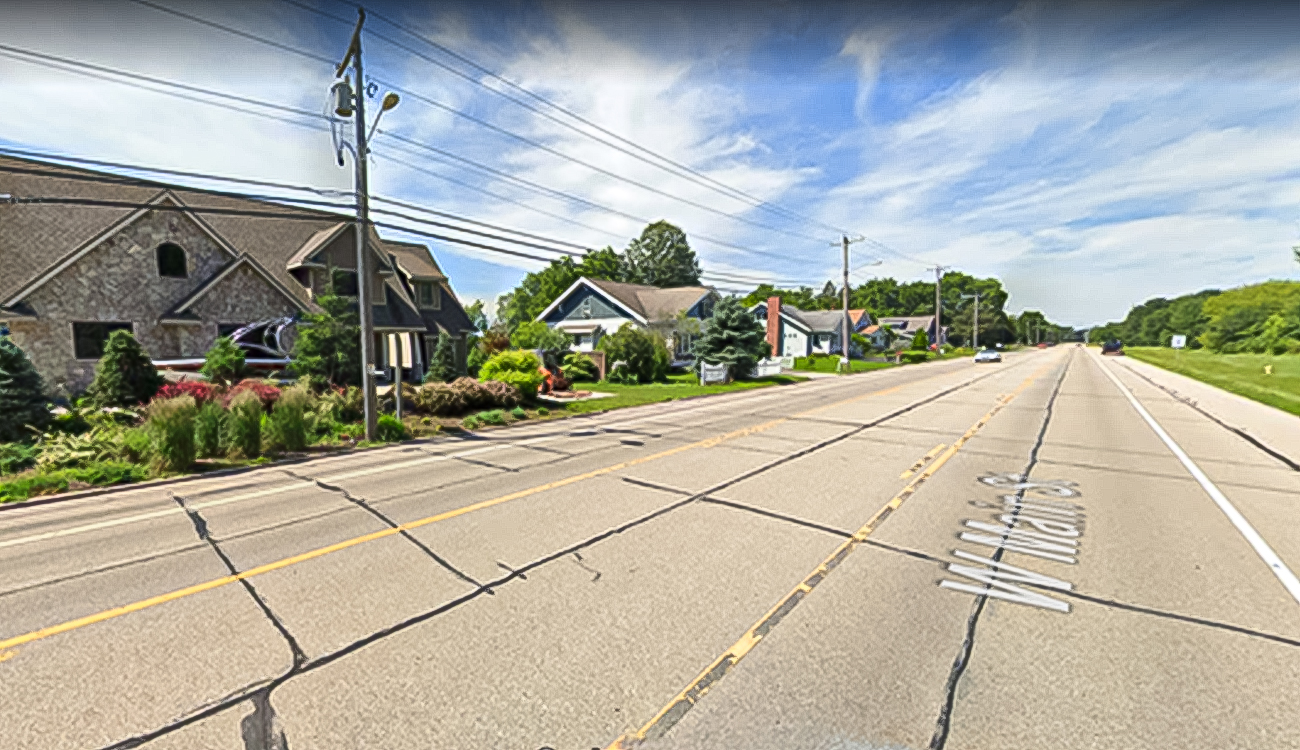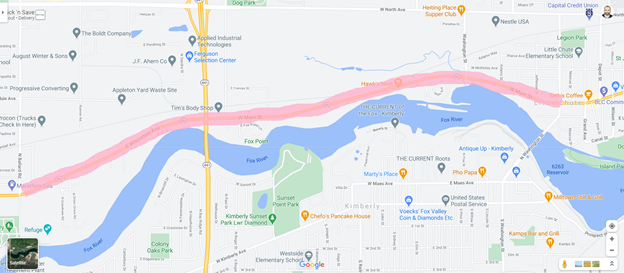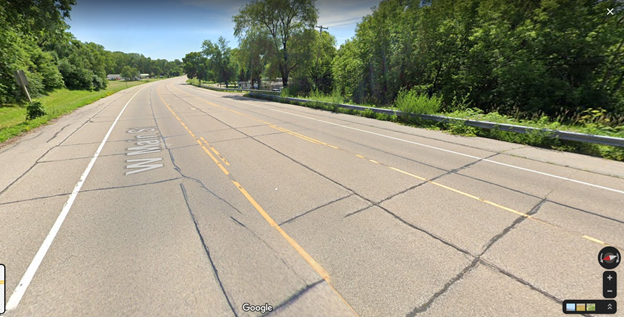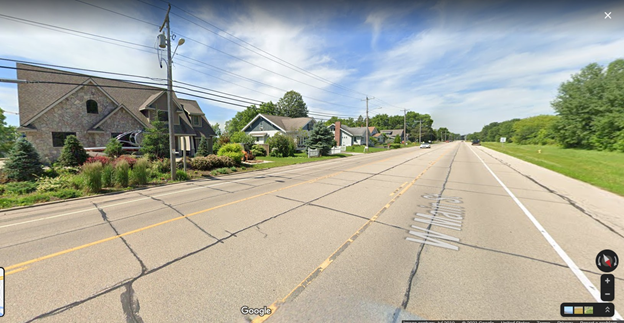
Highway 96: An Ongoing Case Study in Advocacy
What does it take to improve a small section of rural highway?
What does it take to improve a small section of rural highway?
What does it take to improve a small section of rural highway? To convert it from an arterial road that serves mostly drivers into a key segment in a growing multi-modal transportation network that’s safe for riders and families on bikes? Over the next few months, that’s what I’m setting out to learn about State Highway 96 in Northeast Wisconsin.

With the recent opening of the new Nelson Family Heritage Crossing, a remarkable 1100-foot trestle that spans the Fox River to connect key segments of trail in Little Chute and Kaukauna, this is a crucial time to think about the bike network that feeds into it. This three-mile stretch of Highway 96 (highlighted above) hugs the Fox River from Appleton’s east side to downtown Little Chute, funneling riders straight into what will eventually become a 15-mile project called Loop the Locks. A few miles of singletrack on Little Chute Island are also part of the draw that pulls Appleton riders east.
History & Design
I’ve learned from the Appleton Historical Society that this road’s earlier incarnation was Highway 41, a crucial route between Appleton and Green Bay. As Highway 41’s route was moved north and eventually converted into an interstate, the route was renamed Highway 96 and became primarily an inter-city arterial road for the northern half of the Fox Valley.
The road’s current design is what made me start thinking about this project a couple years ago. Although there are narrow bike lanes on the shoulder (with faded paint and sparse signage), almost the entire 3-mile stretch has a continuous center-turn lane. The signed speed limit is 45mph, but the width of the highway and the turning lane subtly, subconsciously encourage drivers to treat it like a freeway. It’s a wide-open swath of concrete that’s designed to drive fast on, where turning drivers won’t impede the flow of speedy traffic. The safety of riders seems to be an afterthought.

Paint on the shoulder isn’t meaningful bike infrastructure, but Highway 96 is wide enough that there’s space to create a safe, family-friendly, integrated segment of the Fox Valley’s bike route network. It would mean rethinking the center turn lane, redesigning the bike lanes, and a mindset shift. Maybe I’m naive or too optimistic for my own good, but that sounds reasonable to me.

The initial challenge was just figuring out who to talk to. I’m not sure everyone realizes how complex the management of state highways is. I definitely didn’t!
It turns out that this short stretch of road touches three different municipalities: Appleton, a discontiguous piece of Grand Chute (essentially, an island off the shore of the rest of the city), and Little Chute. More importantly (and more confusingly), it crosses vertical levels of administration too. The State of Wisconsin owns the highway and builds/designs it according to WISDOT guidelines, but the state contracts with Outagamie County to maintain the travel lanes – which do not, I’ve learned, officially include the bike lanes. The bike lanes and shoulders are maintained separately and independently by each of the three municipalities. To me, as an outsider, it’s a mess of intersecting jurisdictions – and a perfect opportunity for everyone to pass the responsibility of creating safe bike infrastructure onto someone else.
This jumble of jurisdictions and responsibilities isn’t exclusive to this particular three miles of highway in the northeast corner of the state, so this is my plan: to work with folks at the Wisconsin Bike Fed, cycling advocates, road design experts, local administrators, and elected officials to untangle the jumble as best as I can, in the hopes that other riders and bike advocates can learn along with me as the process moves forward.
In the next couple months, I’ll be riding the segment with people who have a finger in the stew. I want to get out on bikes with them and learn more about what it takes to improve this one small stretch of highway. I’m hoping to post updates right here on the Bike Fed blog as things roll along.
Jason Brozek lives in Appleton, where he’s a longtime bike commuter and recreational rider. He teaches politics & policy at Lawrence University, and sits on the city’s Bike & Pedestrian Advisory Committee and the Outagamie County Greenway Implementation Committee.